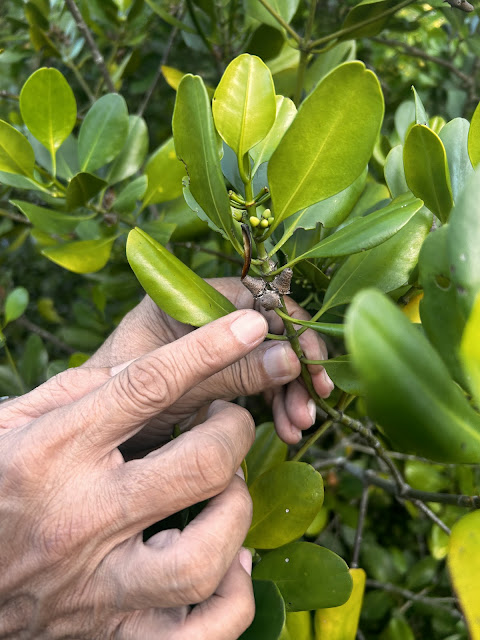Feb 2 is World Wetlands Day. It is has been that way since 1997. It is a United Nations International Day since 2022.
The date
February 2 is actually the Anniversary of the Convention on Wetlands which is
adopted as an international treaty in 1971 in Ramsar, Iran, along the shores of
the Caspian Sea. The Convention on Wetlands is the world’s first modern global
multilateral environment agreement. Today, there are 172 countries who are
contracting parties to the Convention on Wetlands. That 172 countries, of course, include the
Philippines.
What are
Wetlands? Dr. Musonda Mumba, the Secretary General of the Convention n Wetlands
defines it as “wherever land meets water,
life abounds; Wetlands exist in every corner of this beautiful planet and have
often been refered to as the arteries and veins of the Earth.” Wetlands
cover more than 12.1 million square kilometers worldwide. May be saltwater or freshwater, inland or
coastal, natural or human-made, permanent or temporary, static or flowing. Freshwater wetlands include lakes, flood
plains, peatlands,marshes and swamps.
Saltwater wetlands include estuaries, mudflats, saltwater marses,
mangroves, lagoons, coral reefs and shellfish reefs.
Wetlands are most definitely a precious and essential
ecosystem for all of mankind. Benefits
include: Sustenance (providing freshwater
and food); Biodiversity (supporting an intricate tapestry of life); Climate Change & Natural Disasters (empowering
resilience and mitigating the impacts of climate change and extreme weather
events); Economies (providing economic benefits); and Culture & Recreation
(connecting people with nature).
No debate
here. The wetlands of the world are uber
important to mankind. That is why we
celebrate globally the World Wetlands Day every year on Feb 2.
So, how do we celebrate World Wetlands Day (WWD)?
For this 2025, the Mangrove Loving Penguin (MLP) is celebrating WWD by making the choice to learn more about the mangroves which is a very important wetland ecosystem, particularly for our beloved Philippines. How can the MLP learn more about the mangrove ecosystem? By deciding in early January this year to join the Training of Trainers on Mangrove and Beach Forest Rehabilitation and Conservation which is organized by theZSL - Philippines . The training event will be lead by Dr. Jurgenne H. Primavera , the Chief Mangrove Scientific Advisor of ZSL-Philippines. Dr. Primavera is known as the "Mother of Mangroves" .
Such a good fortune indeed for the MLP to be included in the 16th Edition of this Training of Trainers on Mangrove and Beach Forest Rehabilitation and Conservation which is happening this 3-9 February 2025 in the provinces of Aklan and Iloilo.
True to its
excitable nature, the MLP arrived early in the town of Ibajay, Aklan for the
first day of the said ZLS-Phils training on Mangroves and Beach Forest. The MLP was actually the first participants,
among 30, to arrive in the training
venue which is the Katunggan It Ibagay Mangrove Ecopark (or KII Mangrove Ecopark
for short).
Such a
beautiful place this KII Mangrove Ecopark is. It is a labor of love of the good
people of two barangays (Bugtongbato and Naisud) of Ibajay with valuable leadership and financial support
from the Ibajay municipal LGU and invaluable guidance and inspiration from Dr.
Jurgenne and the ZLS – Philippines. It is
home to 28 mangrove species (more than 70% of all mangrove species in the
Philippines). The MLP felt like the
proverbial little boy in a candy store with the
delightful opportunity to come face to face with these 28 mangrove species (many of them for
the first time by MLP) and learn more about their biology and economic benefits
to human society.
 |
| The Mangrove Loving Penguin arriving with a smile at the KII Mangrove Ecopark. |
While visiting the KII Mangrove Ecopark, the MLP got to have a serendipitous conversation with Rey Panaligan who is the LGU-designated park manager. Rey was generous in sharing his knowledge of the ecopark and of its 28 mangrove species. In true teacher fashion (as Rey took up Education in college), he impromptu articulated on the interesting facts about Ceriops decandra as can be seen in this MLP YouTube video. It is the first time for the MLP to come face to face with this particular mangrove species.
 |
| Rey showing the leaves of the Baras-baras mangrove. |
 |
| The buds of the Baras-baras mangrove are compact and used by young boys in the provinces as bullets for their toy blowguns made of bamboo called sumpit. |
Wow. A new
learning on mangroves for the MLP and the training has not yet officially started. How cool is that?
 |
| Group photo with Ibajay Mayor Jose Miguel Miraflores on the 1st day of the training. |
Truly, the days of 3-9 Feb will be Days of Learning for the MLP and his fellow members of the 16th Batch of the Training of Trainers on Mangrove and Beach Forest Rehabilitation and Conservation.Abangan ang mga susunod na kabanata...
We choose to celebrate the world we want by learning and training on how we can help in rehabilitating and conserving one of the more important wetlands ecosystem out there. The world we want is a world where there is a healthy balance between nature and mankind.





No comments:
Post a Comment